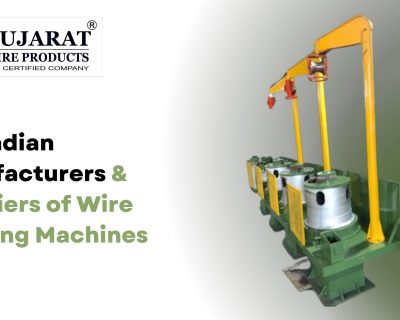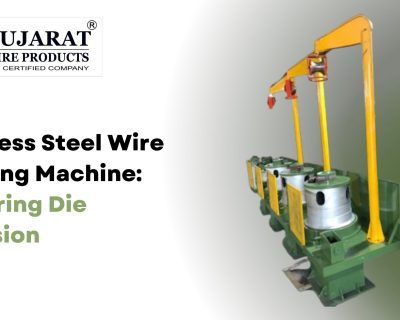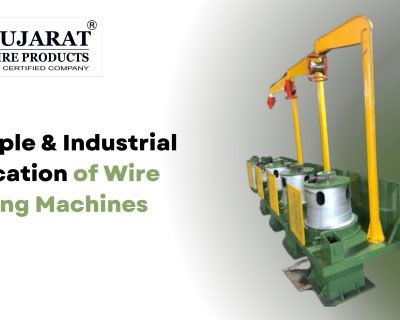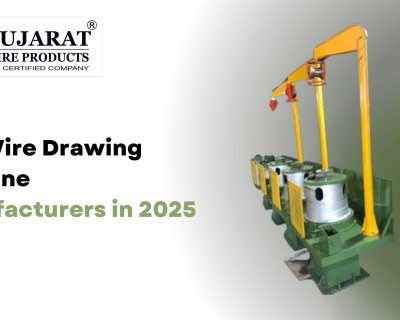Blog
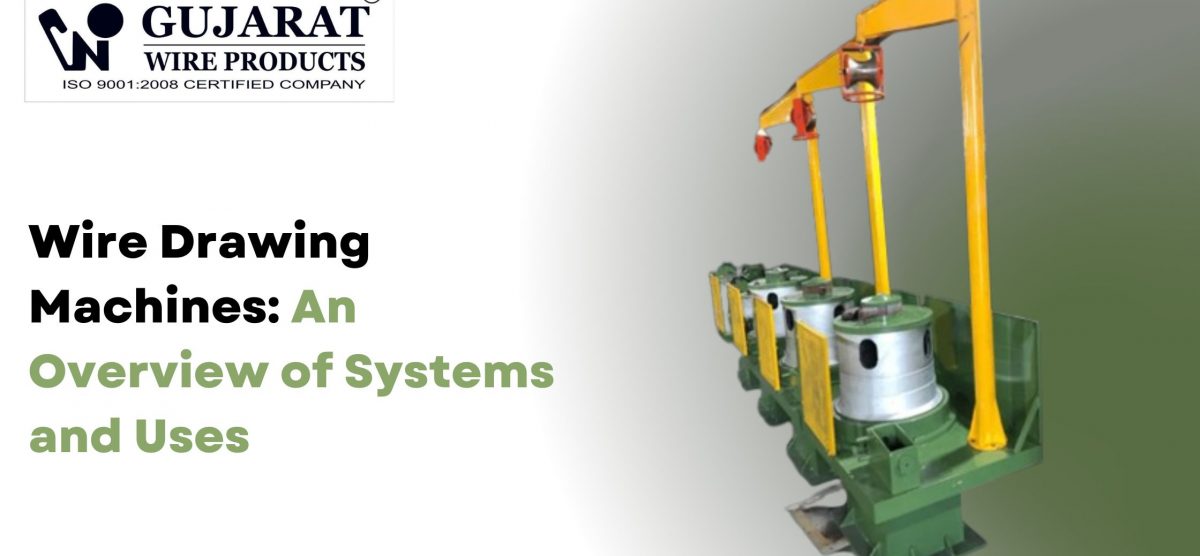
Wire Drawing Machines: An Overview of Systems and Uses
Introduction
Most manufacturers treat wire production as a commodity business—buy raw rod, pull it through dies, ship finished wire. That thinking misses the deeper economics. The wire drawing machine you select determines material waste rates, energy costs per ton, surface finish consistency, and whether you can serve precision markets or only commodity buyers. The global wire drawing machinery market reached USD 2.28 billion in 2024 and projects to USD 3.59 billion by 2032, growing at 5.84% CAGR driven by cable manufacturing, automotive applications, and construction demand. India’s segment alone stands at US$ 156 million in 2025, reflecting rapid industrial expansion. But market growth means nothing if your machine can’t sustain three-shift operation or if die costs eat your margins. This guide examines wire drawing systems by type, industrial applications across metal categories, and selection criteria that separate profitable operations from struggling ones. The focus stays on practical factors: reduction ratios, cooling effectiveness, die lifespan, and energy consumption patterns that determine real-world profitability.
Understanding Wire Drawing Systems
Working Principle
Wire drawing reduces metal rod diameter by pulling it through progressively smaller tungsten carbide or diamond dies. Each pass reduces cross-sectional area by 20-30% while increasing length proportionally. The process work-hardens the metal, increasing tensile strength while improving surface finish. Intermediate annealing between stages restores ductility for materials requiring extreme reduction ratios.
Modern machines achieve drawing speeds exceeding 15 m/s for copper and aluminum, with steel running slower due to higher friction and work hardening rates.
Machine Types and Applications
Pulley (Drum) Type Machines
Pulley systems route wire through individual drawing blocks arranged vertically in oil-bath enclosures. Each block operates as an independent drawing stage with precise tension control. This design excels for producing wire requiring consistent mechanical properties—spring steel, tire cord, and welding wire.
Production capacity reaches 10 tons daily on industrial models, with 22-27% reduction per pass. The oil bath cooling prevents surface oxidation and extends die life.
Bull Block Machines
Single-block machines handle heavy-gauge wire reduction where speed matters less than pulling force. Construction applications like binding wire, fence wire, and concrete reinforcement use this system because it processes 5.5-6mm rod down to 2mm finished wire in continuous runs.
Water Tank Systems
Fine wire production (below 1mm diameter) demands aggressive cooling to prevent work hardening that causes breakage. Water tank machines submerge dies in temperature-controlled baths, enabling copper wire for electronics, medical devices, and precision springs.
Industrial Applications
Cable and Electrical Wire Manufacturing
Copper and aluminum drawing machines supply the electrical industry with conductor wire ranging from household wiring (14-10 AWG) to high-voltage transmission cables. The automotive sector’s shift toward electric vehicles accelerates demand for precision copper wire in motor windings and battery interconnects.
Construction and Fastener Production
Wire drawn from mild steel rod feeds nail making machines, mesh welding lines, and binding wire production. Standard gauges run from 6 SWG to 14 SWG, matching fastener industry specifications. Surface finish quality directly affects galvanizing adhesion and final product rust resistance.
Specialty Metal Processing
Stainless steel wire serves medical instruments, food processing equipment, and marine applications where corrosion resistance matters. Brass and bronze wire production supplies hardware, musical instruments, and decorative applications requiring specific mechanical and aesthetic properties.
Key Performance Advantages
Energy Efficiency
Energy-optimized machines save up to 25% on electricity costs compared to decade-old designs through efficient motor technology and friction-reducing mechanisms. A case study from Ahmedabad showed electricity consumption falling 18% while output doubled after equipment upgrade. At industrial power rates, those savings recover equipment premiums within 18-24 months.
Production Consistency
Automated tension control and die temperature monitoring maintain wire diameter tolerance within ±0.02mm across continuous runs. This consistency matters for customers operating automated assembly lines where dimensional variation causes jams and rejects. A Mumbai exporter penetrated European markets specifically because their drawing line met strict tolerance specifications.
Material Yield Optimization
Modern drawing sequences reduce scrap by 30% through better lubrication systems and real-time tension monitoring that prevents breakage. Lower scrap rates compound with energy savings—every ton of wire that reaches shipping instead of scrap bins multiplies profit margins.
Selection Criteria
Matching System to Material
Copper drawing requires different die materials and cooling approaches than high-carbon steel. Aluminum’s softness demands lower reduction ratios per pass but enables faster line speeds. Stainless steel’s work hardening characteristics require intermediate annealing and specialized lubricants.
Production Volume Requirements
Calculate daily wire consumption in your target diameter range, then work backward to determine inlet rod size and number of drawing passes required. Undersized equipment creates bottlenecks; oversized machines waste capital and floor space.
Infrastructure Considerations
Drawing machines demand stable power supplies—voltage fluctuations damage motor windings and control electronics. Three-phase 380-440V service with adequate amperage capacity is standard. Water-cooled systems require reliable water supply and drainage infrastructure.
FAQs
What determines maximum wire reduction per pass?
Material ductility, die angle, and lubrication effectiveness limit reduction to 20-30% per pass for most metals. Exceeding these ratios causes surface defects and wire breakage. High-carbon steel requires smaller reductions than annealed copper.
How does drawing speed affect wire quality?
Faster speeds generate more friction heat, requiring enhanced cooling to prevent surface oxidation and dimensional variance. Optimal speed balances throughput with quality—copper can run 15+ m/s while maintaining precision, but steel operates slower.
What maintenance intervals keep machines running?
Daily die inspection catches wear before quality degrades. Lubrication system checks prevent friction damage. Monthly alignment verification maintains consistent wire path. Bearing replacement typically occurs at 2,000-3,000 operating hours depending on load.
Can one machine handle multiple wire types?
Yes, but changeover requires die swaps and lubrication system cleaning. Plan production runs by material type to minimize setup time. Copper-to-steel transitions demand thorough cleaning to prevent contamination.
What wire diameters suit different industries?
Construction wire runs 8-14 SWG (2-4mm). Electrical applications span 10-24 AWG (0.5-2.5mm). Electronics and medical devices use fine wire below 0.5mm requiring specialized equipment
Conclusion
Wire drawing machine selection determines production economics for years. Match system type to your material requirements, verify energy efficiency specifications, and confirm service infrastructure before purchasing. Request detailed production trials with your actual wire specifications.
Gujarat Wire Products has manufactured precision wire drawing and processing equipment since 1975, serving operations across India, Africa, Europe, and Asia with ISO 9001:2008 certified systems. Our machines integrate proven mechanical designs with modern control systems and energy-efficient motor technology. We provide complete technical support including installation supervision, operator training programs, die selection guidance, and preventive maintenance planning.
Schedule a technical consultation—contact our engineering team at gujaratwireproducts.com to discuss your specific wire production requirements and evaluate system configurations matched to your material specifications and volume targets.

